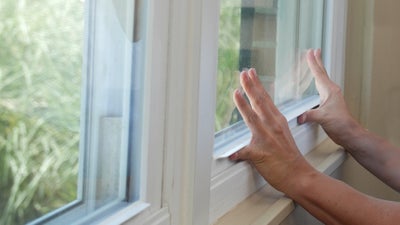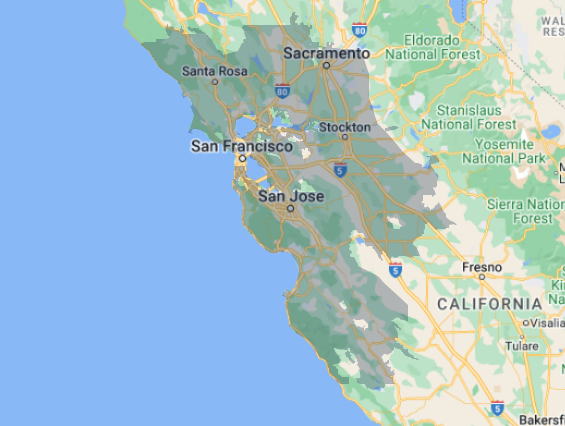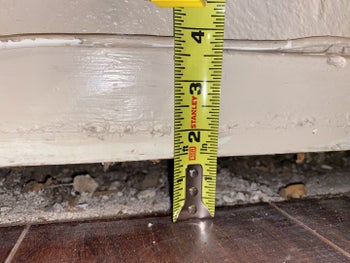How To Fix A Sticking Door Caused By Foundation Settlement?
Table of Contents
1. Understanding The Causes Of Differential Foundation Settlement
2. How To Fix A Sticking Door Caused By Foundation Settlement?
3. How Underpinning A Foundation Works
4. Ways To Help Prevent Differential Foundation Settlement
Wondering how to fix a sticking door caused by foundation settlement? Differential foundation settlement is a common cause of sticking doors because settlement throws everything out of plumb. This results in things like uneven floors and doors that don’t open or close easily – or sometimes at all!
If you have a sticking door, it’s essential to identify and address both the symptoms (the stuck door itself) and what’s causing it. If the problem is caused by foundation settlement, any fix you implement that doesn’t take that into account, will be temporary, and you’ll end up paying more to fix the problem later because foundation problems can get worse over time.
In this blog post, we will examine foundation settlement, its causes, signs, repair solutions, and finish up with some things you can do to help mitigate foundation settlement.
Understanding The Causes Of Differential Foundation Settlement
What Is Differential Foundation Settlement?
Differential foundation settlement occurs when the ground beneath a structure settles unevenly into the soil, causing one section of the building to sink lower than another. Foundation settlement puts a lot of stress on a foundation and can lead to serious and costly structural damage. Cracks in walls, floors, ceilings, and sticking doors and windows are common symptoms of differential foundation settlement.
In contrast, uniform foundation settlement occurs when a structure settles evenly into the ground. A small amount of uniform settlement is common in a newly built structure and usually doesn’t cause any problems.
What Causes Differential Foundation Settlement?
The causes of differential foundation settlement are various, and the most common include the following:
- Expansive soil – Because expansive soil contains a lot of clay, it swells when it soaks up moisture and then shrinks when it releases moisture and dries out. This swelling-shrinking process – which usually happens seasonally – creates movement in the ground under the foundation and can easily lead to differential settlement and cause your doors to stick.
- Erosion-prone soil – Some types of soil are prone to erosion; if this happens, it can cause voids to form in the ground under the foundation. If the structure settles into the voids, it could lead to differential settlement and sticking doors.
- Soil not adequately compacted – Soil must be compacted before construction starts. If this isn’t done correctly, the structure could settle unevenly into the ground after it’s built.
- Seismic activity – We probably don’t need to explain how earthquakes can cause differential settlement.
- Excavation – Heavy excavation too close to a building can destabilize the foundation leading to differential settlement and problems like uneven floors, wall cracks, and sticking doors and windows.
- Improper Drainage – The lack of proper drainage around your home can be critical and in some cases accelerate the process of foundation settlement in areas. Soil absorbs the water and can be over overwhelmed due to the poor drainage around the perimeter of the yard. Downspouts should be installed to direct the water from rainfall away from the foundation of the home.
Understanding the cause of foundation settlement is always the first step in addressing this issue before attempting any repairs. For example, if voids formed under the foundation because poor drainage washed away erosion-prone soil, the drainage problem will need to be addressed to prevent the problem from recurring.
Signs Of Foundation Settlement
Foundation settlement can cause severe damage to your home and should be addressed immediately. Therefore, all homeowners should learn the most common signs of differential foundation settlement. These include the following:
- Cracks in walls, floors, or ceilings
- Sticking doors and windows
- Diagonal cracks from the corners of windows and doors
- Stair step cracks in brick or masonry
- Uneven or sloping floors
- Crack that goes across a ceiling and down a wall
- Gaps around doors and windows
- Chimneys or porches that are pulling away from the house

By taking note of these signs and acting promptly, you can prevent more serious damage to your home from occurring due to foundation settlement.
How To Fix A Sticking Door Caused By Foundation Settlement?
The only way to fix a sticking door caused by foundation settlement is to repair the foundation. Repairing a foundation damaged by differential settlement is not a DIY project. Only an experienced professional foundation repair contractor should ever fix a foundation problem caused by differential settlement.
The two most common repair solutions for differential settlement are push piers and helical piers. The procedure is called underpinning and will stabilize the foundation and prevent your door from getting stuck again.
Keep in mind that in some cases a sticking door might not be caused by foundation settlement. For example, a sticking door can also be caused by poor framing installation.
How Underpinning A Foundation Works
Underpinning a foundation is designed to stabilize and strengthen a building’s foundation. It extends the foundation to strong soil that can support it, thereby preventing further foundation settlement. Underpinning is an effective, cost-efficient way to permanently restore and protect your home from future foundation settlement issues.
Push piers are driven down to load-bearing soil using the weight of the building and hydraulic pressure. Helical piers, because they’re shaped like corkscrews, are turned into the ground until they reach load-bearing strata. Once the piers are in place, the structure is raised to maximum practical level.
Underpinning Using Push Piers
Underpinning using push piers is one of the most widely used solutions to fix a sticking door caused by foundation settlement. Push piers are hydraulically driven into the ground until they reach load-bearing soil or rock that can support the structure. The installation involves attaching steel brackets to the footing and then installing the push piers beneath the areas affected by settlement. The push piers provide deep, stable support for the foundation.
Underpinning Using Helical Piers
Helical piers, because they’re shaped like corkscrews, are turned into the earth using hydraulic equipment. Once they’re in place, a synchronized hydraulic lifting system raises the foundation to maximum practical level. A geotechnical engineer determines the torque and depth necessary to support the failing foundation.
Ways To Help Prevent Differential Foundation Settlement
Because excess soil moisture is usually the culprit behind most cases of foundation settlement, the most effective way to help prevent trouble is to control groundwater around the foundation. Here are some ways to do that:
- If necessary, regrade the yard around your home so that it slopes away from the foundation. By regrading your yard, you ensure that groundwater is properly channeled away from the foundation.
- Clean your gutters regularly to ensure that runoff doesn’t flow over the side of the house and soak the soil around the foundation.
- Use downspout extensions to carry runoff at least four feet from your foundation before release.
- Consider removing and replanting any shrubs, flowers, etc., planted next to the house. They need water, which means you’ll add moisture to the ground around the foundation. This is what you’re trying to avoid.
- Install a drain tile system. If you want to take your prevention efforts one step further, go for a drain tile system. When it comes to foundation waterproofing, nothing beats a drain tile system.
If you take these proactive steps, you’ll be able to reduce any risk for future foundation settlement issues and enjoy peace of mind about the structural integrity of your home.
Of course, there are other causes of foundation settlement besides excess soil moisture. If one of those is present, controlling groundwater around the foundation isn’t going to prevent foundation settlement.
If you need help fixing a sticking door caused by foundation settlement, contact us today and schedule a foundation evaluation. If we find a problem, we’ll give you a repair estimate. We serve the Bay Area and Northern California.
More Resources
Publish Date:
Last Modified Date:

Our Locations
2333 Courage Dr. Suite C
Fairfield, CA 94533
1161 N Fair Oaks Ave
Sunnyvale, CA 94089



